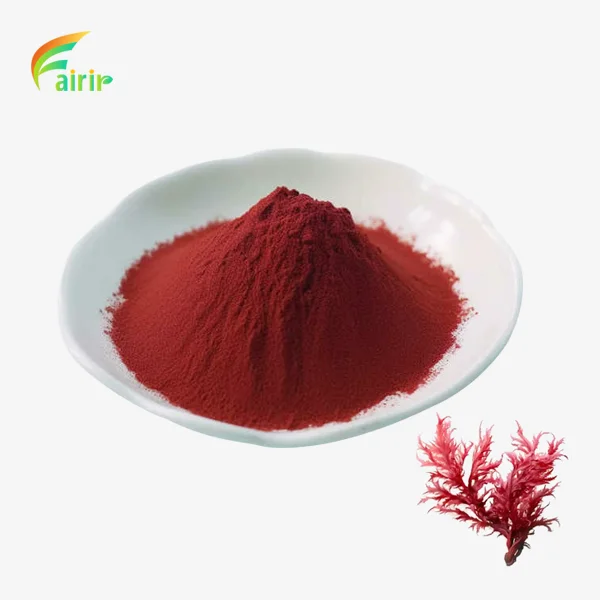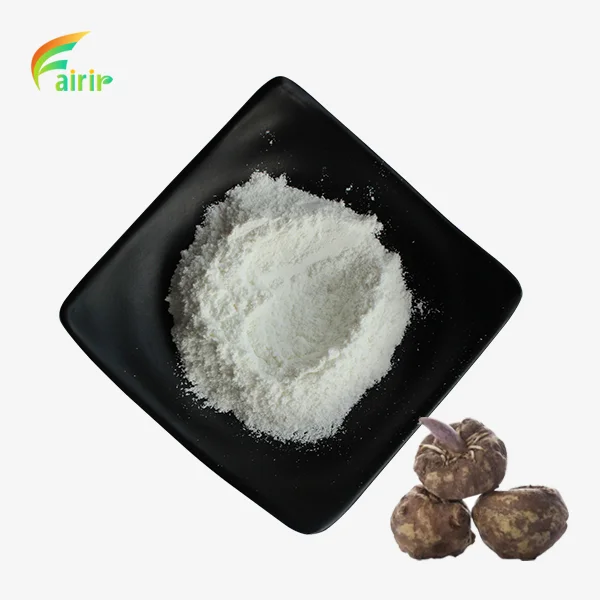What are the solubility properties of melatonin powder?
Melatonin powder, a widely used supplement known for its sleep-regulating properties, exhibits unique solubility characteristics that are crucial for its formulation and application in various products. Understanding the solubility properties of melatonin powder is essential for manufacturers, researchers, and consumers alike. This hormone, naturally produced by the pineal gland, is synthesized in laboratory settings to create pharmaceutical-grade melatonin powder with 99% purity (CAS 73-31-4). The solubility of melatonin powder plays a significant role in its bioavailability, stability, and effectiveness in different formulations, ranging from tablets and capsules to gummies and functional beverages. By exploring the solubility properties of melatonin powder, we can gain insights into its behavior in various solvents, its stability under different conditions, and strategies to enhance its solubility for optimal use in sleep-aid products and other applications.

Solubility of Melatonin in Water and Organic Solvents
Water Solubility
Melatonin powder exhibits limited solubility in water, which presents challenges for aqueous formulations. At room temperature, the solubility of melatonin in water is approximately 1.0 mg/mL. This relatively low water solubility can impact the bioavailability of melatonin in oral formulations and may require additional strategies to enhance dissolution. Despite its limited water solubility, melatonin powder can still be effectively incorporated into various water-based products through careful formulation techniques and the use of solubility enhancers. Understanding the water solubility of melatonin powder is crucial for developing stable and effective aqueous formulations, such as oral solutions, suspensions, and functional beverages.
Solubility in Organic Solvents
Melatonin powder demonstrates higher solubility in various organic solvents compared to water. It is readily soluble in ethanol, with a solubility of approximately 50 mg/mL. This property makes ethanol a preferred solvent for many melatonin formulations, particularly in liquid supplements and tinctures. Melatonin also shows good solubility in other organic solvents such as dimethyl sulfoxide (DMSO) and propylene glycol. The solubility in these organic solvents can reach up to 100 mg/mL or more, depending on the specific solvent and conditions. The enhanced solubility of melatonin powder in organic solvents offers greater flexibility in formulation development, allowing for higher concentrations and improved stability in certain product types.
pH-Dependent Solubility
The solubility of melatonin powder is influenced by pH, exhibiting pH-dependent behavior. In acidic conditions (pH < 5), melatonin shows increased solubility due to protonation of its indole nitrogen. Conversely, in alkaline conditions (pH > 7), the solubility decreases as melatonin becomes more neutral. This pH-dependent solubility profile is important to consider when formulating melatonin products, especially those intended for oral administration. Understanding the pH-solubility relationship allows formulators to optimize the dissolution and absorption of melatonin powder in different physiological environments, such as the stomach (acidic) and intestines (neutral to slightly alkaline). By manipulating the pH of the formulation or utilizing pH-modifying excipients, the solubility and bioavailability of melatonin can be enhanced in various product formats.
Stability and Storage Recommendations for Melatonin Solutions
Temperature Sensitivity
Melatonin powder and its solutions demonstrate sensitivity to temperature, which significantly impacts their stability and shelf life. High temperatures can accelerate the degradation of melatonin, leading to a loss of potency and the formation of breakdown products. To maintain the stability of melatonin powder and solutions, it is recommended to store them at controlled room temperature, typically between 20°C and 25°C (68°F to 77°F). For long-term storage or in warmer climates, refrigeration at 2°C to 8°C (36°F to 46°F) may be advisable. When formulating melatonin products, such as gummies or softgels, it's crucial to consider the heat sensitivity of melatonin powder during the manufacturing process to minimize degradation. Implementing temperature-controlled production environments and utilizing heat-stable blends can help preserve the integrity of melatonin in various formulations.
Light Sensitivity
Melatonin powder is highly sensitive to light exposure, particularly UV and visible light. Light-induced degradation can lead to a rapid decrease in melatonin content and the formation of photodegradation products. To protect melatonin powder and solutions from light-induced degradation, it is essential to store them in opaque or amber-colored containers that block out light. When handling melatonin powder during formulation or analysis, it's advisable to work under subdued lighting conditions or use light-protective equipment. For finished products containing melatonin, such as tablets or capsules, appropriate packaging materials should be selected to ensure light protection throughout the product's shelf life. Additionally, consumers should be advised to store melatonin products in a dark place or their original packaging to maintain potency.
Oxidation and Antioxidant Protection
Melatonin powder is susceptible to oxidation, which can compromise its stability and effectiveness. Oxidative degradation can occur due to exposure to air, the presence of metal ions, or interaction with other oxidizing agents in the formulation. To mitigate oxidation and enhance the stability of melatonin solutions, antioxidants are often incorporated into the formulation. Common antioxidants used in melatonin products include vitamin E (tocopherols), vitamin C (ascorbic acid), and butylated hydroxytoluene (BHT). These antioxidants help scavenge free radicals and prevent oxidative damage to melatonin molecules. When storing melatonin powder or solutions, it's important to minimize exposure to air by using airtight containers and implementing proper sealing techniques. For bulk storage of melatonin powder, the use of vacuum-sealed aluminum foil bags or fiber drums with double-layer food-grade poly bags can provide effective protection against oxidation and moisture.
Strategies to Enhance Melatonin Solubility in Aqueous Formulations
Use of Solubilizing Agents
To overcome the limited water solubility of melatonin powder and improve its dissolution in aqueous formulations, various solubilizing agents can be employed. Cyclodextrins, particularly β-cyclodextrin and its derivatives, have shown promising results in enhancing melatonin solubility through the formation of inclusion complexes. These complexes can increase the apparent solubility of melatonin by up to 10-fold or more, depending on the specific cyclodextrin used and the formulation conditions. Another effective approach is the use of surfactants, such as polysorbates (e.g., Tween 80) or sodium lauryl sulfate, which can form micelles to solubilize melatonin molecules. Cosolvents like propylene glycol or polyethylene glycol (PEG) can also be utilized to improve the solubility of melatonin powder in aqueous systems. By carefully selecting and optimizing the concentration of these solubilizing agents, formulators can significantly enhance the solubility and dissolution rate of melatonin in various aqueous products, including oral solutions, suspensions, and functional beverages.
Particle Size Reduction
Reducing the particle size of melatonin powder is an effective strategy to enhance its solubility and dissolution rate in aqueous media. Micronization techniques, such as jet milling or ball milling, can be employed to decrease the particle size of melatonin to the micron or submicron range. This size reduction increases the surface area-to-volume ratio of the particles, leading to improved dissolution kinetics and potentially higher bioavailability. Nanonization, which further reduces particle size to the nanometer scale, can be achieved through techniques like high-pressure homogenization or nanoprecipitation. Nanocrystals or nanosuspensions of melatonin have shown significant improvements in solubility and dissolution rate compared to conventional melatonin powder. When implementing particle size reduction strategies, it's important to consider the potential impact on stability, as smaller particles may be more susceptible to aggregation or chemical degradation. Proper stabilization techniques, such as the use of suitable surfactants or polymers, should be employed to maintain the advantages of reduced particle size in the final formulation.
pH Modification and Salt Formation
Exploiting the pH-dependent solubility of melatonin powder can be an effective approach to enhance its solubility in aqueous formulations. By adjusting the pH of the formulation to slightly acidic conditions (pH 4-5), the solubility of melatonin can be significantly increased due to protonation of the molecule. This strategy is particularly useful for developing oral liquid formulations or injectable solutions. However, it's crucial to consider the impact of pH modification on the overall stability and physiological compatibility of the product. Another approach to improve melatonin solubility is through salt formation. While melatonin itself is a neutral molecule, it can form salts with various counterions, such as hydrochloride or sodium salts. These melatonin salts often exhibit enhanced solubility and dissolution properties compared to the free base form. The selection of appropriate salt forms should take into account factors such as stability, hygroscopicity, and compatibility with other formulation components. By carefully optimizing pH conditions or utilizing suitable salt forms, formulators can significantly enhance the solubility and performance of melatonin powder in aqueous systems, leading to improved bioavailability and efficacy in various product applications.
Conclusion
Understanding the solubility properties of melatonin powder is crucial for developing effective and stable formulations. By considering its behavior in water and organic solvents, implementing appropriate storage conditions, and utilizing strategies to enhance solubility, manufacturers can optimize melatonin-based products for various applications. The growing demand for sleep-aid supplements and the versatility of melatonin powder in different formulations highlight its importance in the pharmaceutical and nutraceutical industries. As research continues to uncover new applications and formulation techniques, the potential for innovative melatonin products remains promising.
Enhance Sleep Solutions with Shaanxi Fairir Premium Melatonin Powder
At Shaanxi Fairir Biotech Co., Ltd., we specialize in providing high-quality melatonin powder and other plant extracts to meet the diverse needs of our customers. Our state-of-the-art manufacturing facility, equipped with advanced technology and staffed by experienced professionals, ensures the production of premium melatonin powder that meets global quality standards. We are committed to delivering exceptional products and services to support our clients in developing innovative sleep-aid formulations and other melatonin-based applications. For more information or to discuss your specific requirements, please contact us at sales@fairirbiotech.com.
FAQ
Q: What is the water solubility of melatonin powder?
A: Melatonin powder has limited water solubility, approximately 1.0 mg/mL at room temperature.
Q: Which organic solvents are suitable for dissolving melatonin?
A: Ethanol, dimethyl sulfoxide (DMSO), and propylene glycol are suitable organic solvents for melatonin, with solubilities ranging from 50 mg/mL to 100 mg/mL or more.
Q: How does pH affect melatonin solubility?
A: Melatonin solubility increases in acidic conditions (pH < 5) and decreases in alkaline conditions (pH > 7).
Q: What are the recommended storage conditions for melatonin powder?
A: Store melatonin powder at controlled room temperature (20-25°C), protected from light and moisture in airtight, opaque containers.
Q: How can melatonin solubility be enhanced in aqueous formulations?
A: Solubility can be enhanced using solubilizing agents like cyclodextrins, surfactants, particle size reduction techniques, and pH modification.
References
1. Hardeland, R. (2018). Melatonin and Synthetic Melatoninergic Agonists: Actions and Metabolism in the Central Nervous System. Central Nervous System Agents in Medicinal Chemistry, 18(2), 102-121.
2. Zisapel, N. (2018). New perspectives on the role of melatonin in human sleep, circadian rhythms and their regulation. British Journal of Pharmacology, 175(16), 3190-3199.
3. Tordjman, S., Chokron, S., Delorme, R., Charrier, A., Bellissant, E., Jaafari, N., & Fougerou, C. (2017). Melatonin: Pharmacology, Functions and Therapeutic Benefits. Current Neuropharmacology, 15(3), 434-443.
4. Li, J., Wu, W. K., Yu, J., & Sung, J. J. (2017). Melatonin in gastrointestinal protection and carcinogenesis. Chronic Diseases and Translational Medicine, 3(1), 11-21.
5. Andersen, L. P., Gögenur, I., Rosenberg, J., & Reiter, R. J. (2016). The Safety of Melatonin in Humans. Clinical Drug Investigation, 36(3), 169-175.
6. Slominski, A. T., Hardeland, R., Zmijewski, M. A., Slominski, R. M., Reiter, R. J., & Paus, R. (2018). Melatonin: A Cutaneous Perspective on its Production, Metabolism, and Functions. Journal of Investigative Dermatology, 138(3), 490-499.











_1751965378790.webp)